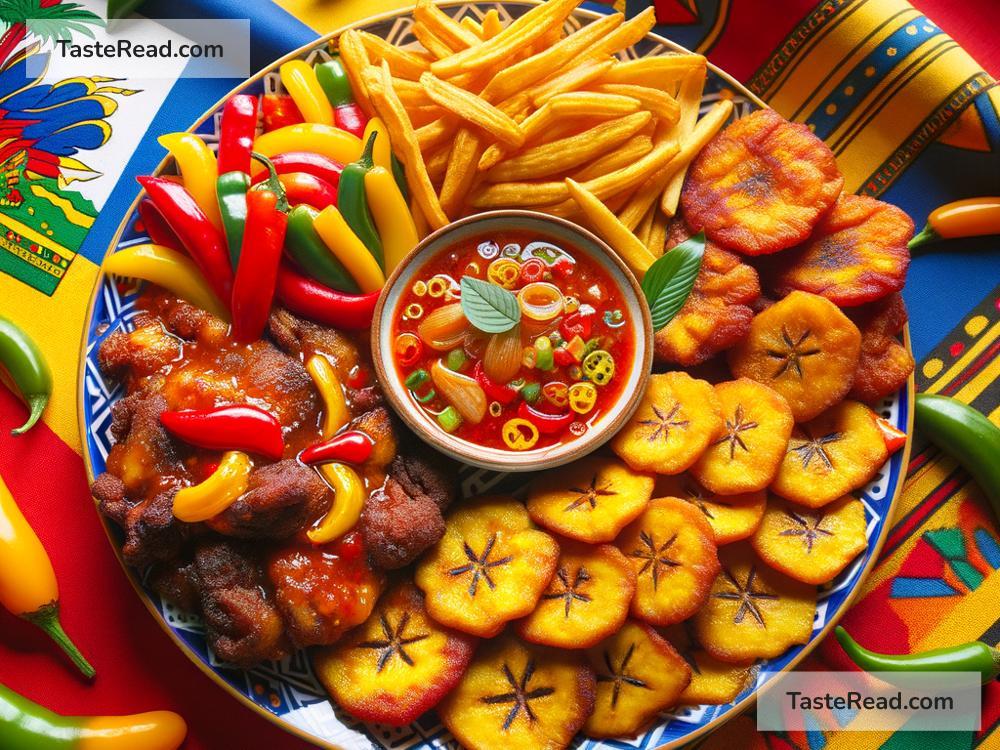Exploring the Origins of the Haitian Griot: A Journey into Haiti’s Heart
In the vibrant tapestry of Haitian cuisine, one dish stands tall, telling stories of history, culture, and community. This dish is the Haitian Griot (gree-oh), a culinary masterpiece that marries flavors, traditions, and people in a celebration of Haiti’s rich heritage. But what is the Haitian Griot, and where does it come from? Let’s dive into its origins and explore the depths of this beloved dish.
The Haitian Griot is a dish that is as flavorful as it is colorful. At its core, it is made of pork that has been marinated in a mix of citrus and spices, then slow-cooked and finally fried until it reaches a perfect blend of tender and crisp. Served with pikliz (a spicy pickled vegetable medley), mayi moulen (cornmeal), and bannann peze (fried plantains), Griot is a feast not just for the stomach but for the soul.
To understand the origins of the Haitian Griot, we must travel back in time, tracing the roots back to West Africa. The word “griot” itself tells a story – in West African culture, a griot is a storyteller, musician, or poet, a keeper of oral tradition and history. The dish, much like its name, acts as a vessel carrying the history of the Haitian people from Africa through their journey of slavery to the vibrant, resilient culture that has emerged through hardship.
Brought to the island of Hispaniola during the transatlantic slave trade, the ancestors of today’s Haitians brought with them not just their physical strength but their rich culture and cuisines. Among these was a precursor to what would become the Haitian Griot, adapted from African cooking traditions that favored marination and slow cooking to tenderize and flavor the meat.
The evolution of Griot in Haiti is a reflection of the island’s complex history. Cuisine, after all, is not just about food, but about survival, adaptation, and identity. Under the brutal conditions of slavery, enslaved Africans had limited access to ingredients and resources. They had to make do with what was available, which often meant the less desirable parts of the plantations’ livestock. Through ingenuity and culinary creativity, these original chefs transformed simple, available ingredients into something extraordinary.
The marination process, a key feature of Griot, is not just about flavor. It’s about tenderizing tougher cuts of meat, making them not just edible but delicious. The use of citrus, particularly sour orange, is reflective of the tropical bounty of the island and marries well with the array of spices, such as Scotch Bonnet peppers and cloves, available locally. This not just adds layers of flavor but also highlights the intermingling of African traditions with the produce and tastes of the Caribbean.
As Haiti fought for and won its independence in 1804, becoming the world’s first black-led republic and the first independent Caribbean state, its cuisine, including Griot, served as a symbol of resilience, pride, and unity. Food was, and still is, a source of communal joy and a reflection of the island’s ability to adapt and thrive despite historical oppressions and ongoing challenges.
Today, the Haitian Griot remains a staple of Haitian culture, enjoyed in homes and restaurants, during everyday meals, and at festive celebrations. It is a dish that encourages gathering, sharing, and storytelling, much like the griots of West Africa. It’s not just food; it’s an experience – a connection to the past, a celebration of the present, and a hope for the future.
In understanding the origins of the Haitian Griot, we uncover a story of endurance, creativity, and community. It is a testament to the strength of the human spirit and the power of culture to not just endure but flourish under the most challenging circumstances. To taste Griot is to partake in a centuries-old tradition, to celebrate the journey of the Haitian people, and to remember the stories of resilience that define Haiti’s heart.
As we explore the dish’s origins, let’s remember that food is more than sustenance. It’s a narrative steeped in history, a bridge connecting generations, and a canvas painted with the flavors of human experience. The Haitian Griot, with its deep historical roots and rich layers of flavor, invites us on a journey – a delicious exploration of Haiti’s past, present, and future.


